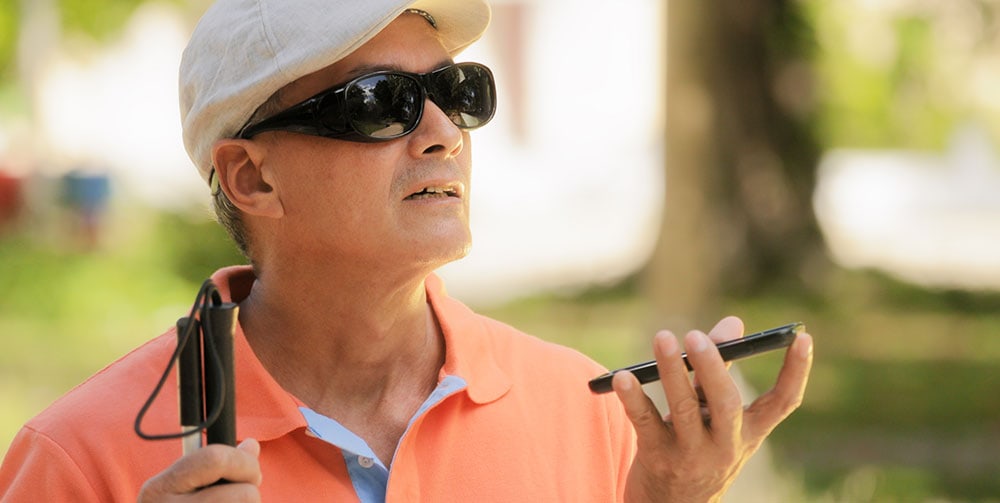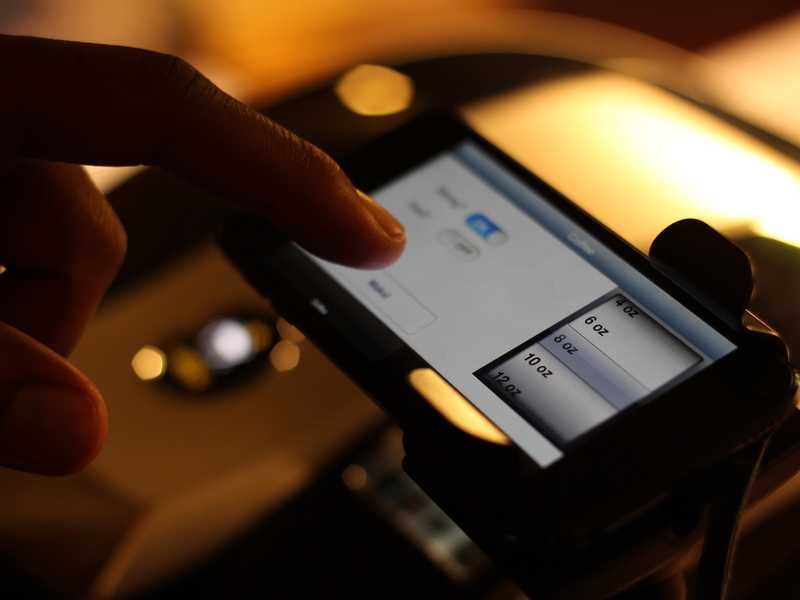Enhancing Lives With Advanced Assistive Tools for the Blind
The combination of sophisticated assistive tools for the blind is transforming exactly how individuals experience their surroundings and communicate with their communities. What does this advancement mean for the future of assistive technology and its function in encouraging individuals?
Introduction of Assistive Tools
Assistive tools for the blind include a diverse variety of tools and innovations made to enhance freedom and improve the lifestyle for people with aesthetic impairments. These tools satisfy various demands, from navigating and mobility to interaction and day-to-day job monitoring.
One of the main groups of assistive devices consists of movement help, such as white walking canes and guide pet dogs, which aid customers navigate their environments safely. Electronic travel aids, outfitted with sensors and audio feedback, likewise play a considerable function in movement improvement.
In addition, tools that help with day-to-day living tasks, such as adaptive kitchen devices, Braille tags, and speaking watches, equip individuals to perform jobs independently. Interaction help, consisting of display viewers and Braille displays, facilitate access to information and allow people to involve effectively with the digital world.
In addition, low-tech services like magnifying glasses and large-print products continue to be important for numerous customers. Collectively, these assistive gadgets serve not only as functional tools yet likewise as important enablers of freedom, fostering better engagement in a world that usually prioritizes sighted experiences. Their assimilation right into everyday life is vital for advertising inclusivity and enhancing general health for those with visual impairments.
Ingenious Technologies in operation
Innovation in modern technology has actually dramatically transformed the landscape of tools available for people with visual disabilities. Amongst one of the most noteworthy innovations are smart glasses incorporated with augmented fact, which offer real-time navigation assistance and item acknowledgment. These devices leverage advanced cams and artificial intelligence to provide acoustic signs, boosting the user's spatial awareness and freedom.
In addition, mobile applications have actually become powerful sources, making it possible for customers to recognize money, checked out text aloud, and browse strange settings via spoken guidelines. Devices such as Braille display screens and refreshable Braille gadgets remain to develop, providing smooth connection with computers and smartphones, thus improving interaction and accessibility to info.
Wearable technology, including smartwatches outfitted with voice-activated functions, better empowers users by helping with quick accessibility to notifications and alerts without calling for aesthetic interaction. Responsive maps and 3D printing are also obtaining traction, offering substantial depictions of rooms that help in alignment and wheelchair training.
Collectively, these innovative technologies not just enhance the day-to-days live of visually damaged individuals but also foster better self-reliance, inclusivity, and engagement with the wider neighborhood, thus reshaping assumptions of access. (Screen readers for the blind)
Individual Stories of Empowerment
Empowerment usually arises from personal experiences that highlight the transformative impact of innovation on individuals with aesthetic impairments. Take, for circumstances, the tale of Sarah, a young artist who reclaimed her enthusiasm for paint with making use of a clever walking cane geared up with challenge discovery. This tool not only facilitated her wheelchair however instilled a newfound confidence, allowing her to navigate public areas individually and seek her creative undertakings.

These narratives highlight the profound impacts that advanced assistive devices can carry every day life. By allowing people to overcome obstacles, technology fosters a sense of freedom and self-regard. Such empowerment stories function as a testimony to the potential of technology, illustrating just how the right devices can considerably improve lifestyle and open doors to brand-new opportunities for those with aesthetic impairments.
Benefits of Advanced Solutions
The combination of cutting-edge modern technology right into assistive gadgets significantly changes everyday experiences for those affected by vision loss. Screen readers for the blind. Instruments such as clever walking sticks outfitted with sensors, navigating apps, and wearable modern technology are created to provide real-time pop over to this site comments, boosting spatial recognition and minimizing the dangers linked with movement.
Furthermore, progressed assistive technologies promote social addition by assisting in interaction and interaction. Voice-activated tools and apps permit individuals to accessibility information and involve with their surroundings separately, breaking obstacles that previously prevented their engagement in educational, specialist, and social settings.
On top of that, the personalization and versatility of these options satisfy the varied demands of customers, consequently enhancing their total lifestyle. Boosted capability, such as things acknowledgment and text-to-speech capabilities, encourages individuals with aesthetic impairments to execute tasks that they may have when discovered testing. Eventually, progressed assistive innovations not just enhance independence and safety however likewise advertise dignity and self-worth, permitting individuals to lead meeting lives.
Future Trends in Assistive Tech
As innovation remains to progress, the landscape of assistive tools for the blind is positioned for amazing innovations that will certainly even more enhance ease of access and independence. Emerging fads in assistive modern technology indicate a shift toward enhanced assimilation of man-made intelligence (AI) and artificial intelligence, making it possible for devices to adapt to individual customer requires in real-time. These advancements are anticipated to assist in more instinctive navigation systems that can identify obstacles and give audio comments, dramatically enhancing outdoor mobility.
In addition, the development of wearable technology, such as wise glasses equipped with increased fact, will allow customers to receive contextual info concerning their surroundings, consequently enriching their spatial recognition. Moreover, advancements in haptic technology assurance to create tactile responses tools, enabling users to view information with touch, improving learning and interaction with their setting.
Telecommunication breakthroughs are likewise leading the way for remote aid services, where experienced specialists can supply advice through video clip telephone calls, making certain support is conveniently accessible. As these patterns unravel, the future of assistive tools for the blind will definitely cultivate greater autonomy, equipping people to browse their world with self-confidence and convenience.

Verdict
The integration of advanced assistive devices for the blind represents a considerable advancement in promoting freedom and enhancing lifestyle. By utilizing innovative modern technologies, these devices empower users to navigate their environments with better self-confidence and autonomy. As the field proceeds to develop, ongoing research and advancement will likely generate a lot more innovative remedies, even more transforming her latest blog the lived experiences of people with aesthetic problems and advertising a higher feeling of incorporation within society.
The integration of innovative assistive gadgets for the blind is changing exactly how individuals experience their surroundings and engage with their areas. The assimilation of sophisticated innovation into assistive gadgets substantially transforms everyday experiences for those impacted by vision loss.As modern technology proceeds to develop, the landscape of assistive tools for the blind is positioned for impressive innovations that will certainly even more enhance ease advice of access and independence. Arising trends in assistive modern technology suggest a change toward raised assimilation of fabricated knowledge (AI) and device knowing, allowing devices to adapt to specific user needs in real-time.The assimilation of advanced assistive tools for the blind represents a considerable improvement in promoting independence and improving high quality of life.